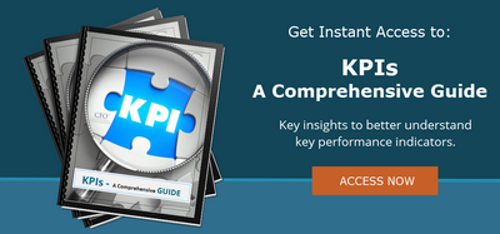
With so many variables across industries and business life stages to consider, a one-size-fits-all approach to KPIs will never succeed.
The most important metrics are those most closely related to what investors expect. For private companies this means tracking the KPIs that owners and financers need to make sound decisions. While the specifics can vary between businesses, the common thread is analyzing metrics which can inform short-term and long-term operations.
Overarching business goals such as profitability or liquidity will also influence KPI choices because KPIs can address different business objectives.
The phase a company is in with their growth curve will affect KPI selection as well. For instance, startups in rapid-growth mode have vastly different objectives than more established businesses, with different KPIs. Similarly, organizations with a cash surplus often track different metrics than debt laden organizations.
A solid financial analysis of any business should start with these five KPIs and further include any metrics that are situationally important:
- Gross Margin Percent – Calculates how much revenue is left after the direct costs of producing the goods have been removed.
Gross Margin = (Revenue – COGS) / Revenue
A higher gross margin percentage means a company is retaining more money on each sale, which can then be used to service debt or reinvest in the business. A lower gross margin indicates the need to find a way to produce goods for less (such as cutting materials costs or reducing labor costs).
- Revenue Growth Rate - Revenue Growth is a KPI used to measure how sales are increasing or decreasing over time.
It is calculated by dividing revenue generated during one-time period by the revenue generated during a subsequent time-period, subtracting 1, and then multiplying by 100 to obtain a percentage.
For example, if you have $1000 in revenue the first month and $3500 the second month, your growth rate would be 250%.
($3500 - $1000) / $1000 x 100 = 250%
Companies typically calculate revenue growth year to year though some track revenue growth from one month to the next. In the latter case, it is only meaningful if the business is unaffected by seasonal factors.
For companies that have revenue affected by seasonality, it makes sense to measure the growth rate in revenue for the month (or season) on the same month (or season) as last year.
When measuring the Revenue Growth Rate, calculate a longer trend (12-18 months) to ensure your percentages reflect an accurate trend and not a one-time exponential growth curve. - Current Ratio – Current ratio is a measure of overall liquidity, which is an ability to pay financial obligations.
Current Ratio = Current Assets / Current Liabilities
A current ratio of less than 1 indicates that a company does not have enough assets (such as cash, inventory, securities, and accounts receivable) to pay off its liabilities (such as debts and accounts payable). This can hurt a business’s chances of acquiring financing. - Quick Ratio – Like the current ratio, the quick ratio is also a measure of liquidity. However, the quick ratio (also known as the “acid-test ratio”) focuses specifically on short-term liquidity. It is a more conservative view of liquidity than the current ratio because it excludes inventory, which is not considered to be a quick source of cash.
Quick Ratio = (Current Assets – Inventories) / Current Liabilities
A quick ratio provides a fast dollar value comparison of assets to liabilities. For example, a quick ratio of 1.8 means that for every $1 of liabilities, a business has $1.80 of assets. - Positive Sentiment – One KPI that cannot be found on any P&L statement is brand sentiment in the form of positive reviews, testimonials, and referrals. While it is not a financial metric, it is equally vital to the success of any modern business. Brand sentiment can predict future success, highlight competitive challenges, and identify areas for improvement.
Staying abreast of what consumers are saying about your business and why is something that every business owner and financial executive needs to prioritize. This “softer” metric is a shrewd reminder to even the most financially-minded business owners that traditional accounting numbers do not always tell the whole story when it comes to a business’s success or failure.
Maintaining consistency while tracking metrics is important for any financial analysis, however it is important to remember that KPIs should continue to evolve as a business matures while tracking key metrics to increase performance. As the business landscape changes and industries innovate, KPIs need to keep pace.
Want a second opinion? A seasoned financial consultant can help provide valuable insight into whether your business is tracking the most appropriate metrics. Your business does not need an existing in-house CFO or controller to ensure it is accurately reporting on and correctly analyzing the right financial metrics.
Schedule a consultation to determine if our financial consulting services or executive search services are the right match for your business.
For emerging professionals, think of key performance metrics as the foundation of your analysis.
Whether you’re an aspiring manager or a seasoned executive, the KPI metrics outlined in our eBook will provide key insights to better understand key performance indicators.







